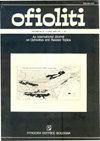The Matchless Amphibolite of the Damara Belt, Namibia: unique preservation of a late Neoproterozoic ophiolitic suture
IF 1.3
4区 地球科学
Q2 GEOLOGY
引用次数: 7
Abstract
Ophiolitic sequences are widely recorded from Meso-Cenozoic orogenic belts, but are only rarely documented from Proterozoic-Paleozoic orogens, so that the geodynamic processes responsible for the emplacement of ancient ophiolites are less well understood compared to their younger counterparts. The Damara belt of Namibia represents a deeply eroded Pan-African (550-500 Ma) collisional belt that records subduction and the eventual collision between the Kalahari and Congo Cratons as part of the amalgamation of the Gondwana supercontinent. The belt has not been affected by later orogenic events so that it preserves the sequence of convergent and collisional tectonics remarkably well. The Southern Zone accretionary prism of the belt records the offscraping and imbrication of a thick metaturbiditic sequence. Within this sequence, the Matchless Amphibolite Belt forms a narrow, 500-3000 m wide unit of intrusive as well as imbricated mafic metavolcanic and plutonic rocks, with Mid-Ocean Ridge Basalt (MORB) geochemistry, that can be traced almost continuously for over 300 km along strike. Based on the MORB-type geochemistry and preserved textures and rock association, most authors consider the Matchless Amphibolite belt to represent relics of oceanic crust related to the closure of the oceanic basin between the Congo and Kalahari cratons. We have measured two traverses across the Matchless Amphibolite and we report here the evidence that these ophiolitic slivers emplaced during ridge-trench interaction and ridge subduction. We discuss factors that have most likely contributed to the formation and preservation of such an old ridge-trench encounter and its unique geometry纳米比亚达马拉带无与伦比的角闪岩:新元古代晚期蛇绿岩缝合线的独特保存
蛇绿岩序列广泛记录于中新生代造山带,但很少记录于元古代-古生代造山带,因此与年轻的蛇绿岩相比,对古代蛇绿岩侵位的地球动力学过程了解较少。纳米比亚的达马拉带代表了一个深度侵蚀的泛非(550-500 Ma)碰撞带,记录了卡拉哈里火山口和刚果火山口之间的俯冲和最终碰撞,这是冈瓦纳超大陆融合的一部分。该带没有受到后期造山事件的影响,因此它非常好地保存了会聚和碰撞构造的序列。该带的南区增生棱镜记录了一个厚变质浊积岩序列的冲断和叠瓦作用。在该序列中,无配对角闪岩带形成了一个狭窄的500-3000m宽的侵入岩以及叠瓦状镁铁质变火山岩和深成岩单元,具有中洋脊玄武岩(MORB)地球化学特征,几乎可以沿着走向连续追踪300多公里。基于MORB型地球化学和保存的纹理和岩石组合,大多数作者认为无配对角闪岩带代表了与刚果和卡拉哈里克拉通之间洋盆闭合有关的洋壳遗迹。我们测量了两次穿越无匹配角闪岩的横向,并在此报告了这些蛇绿片在山脊-海沟相互作用和山脊俯冲过程中侵位的证据。我们讨论了最有可能促成这种古老山脊-海沟相遇的形成和保存的因素及其独特的几何形状
本文章由计算机程序翻译,如有差异,请以英文原文为准。
求助全文
约1分钟内获得全文
求助全文
来源期刊

Ofioliti
地学-地质学
CiteScore
2.40
自引率
7.70%
发文量
1
期刊介绍:
Since 1976, Ofioliti provides an international forum for original contributions and reviews in the field of the geodynamics, petrology, geochemistry, biostratigraphy, stratigraphy, tectonics and paleogeography applied to ophiolitic terrains and modern oceanic lithosphere, including their sedimentary cover. Studies of topics such as geodynamics of the mantle, the evolution of orogens including ophiolites and paleoceanography are also welcome
 求助内容:
求助内容: 应助结果提醒方式:
应助结果提醒方式:


